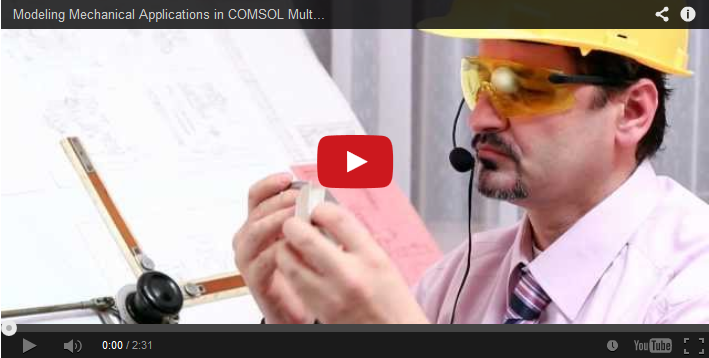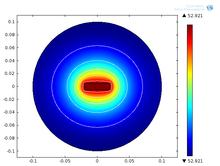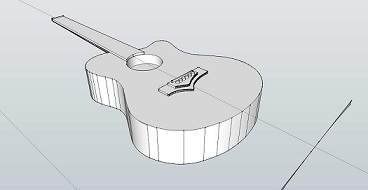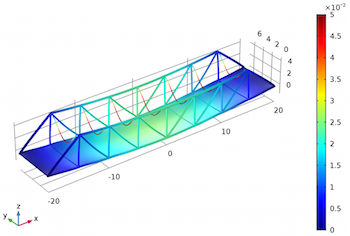Structural & Acoustics Blog Posts

Industry: Continuum Blue Simulates Structural Mechanics
On January 10th, hundreds of people tuned in to hear COMSOL and Continuum Blue discuss Structural Mechanics simulations in certain industry applications. As promised in my previous blog post on multiphysics modeling webinars happening in 2013, here is a round-up of the event — including a video excerpt detailing three structural analysis examples presented by Continuum Blue.

Video: Modeling Mechanical Applications
How do you avoid product failure down the line? By ensuring you manufacture accurate parts and assemble them correctly, of course. Manufacturing success stems from good design ideas. “Good ideas” are not conjured up at random; good ideas are those that are based on real-world physical principles. This video will show you how your company can infuse sound concepts into the early product development stages by modeling mechanical applications in COMSOL Multiphysics.

Gold Nanorods for Medical Treatment
Nanorods are synthetic nanoscale objects used in the area of nanotechnology. They can be synthesized from semiconducting materials or metals, such as gold. The applications of nanorods are many, ranging from display technologies and energy harvesting to cancer therapy.

Researching Carbon Fiber Reinforced Plastic Acoustic Guitars
There are traditional acoustic guitars made of wood, and now there are also those made entirely out of carbon fiber reinforced plastic (CFRP). Do these plastic guitars sound like their wooden forbearers? Guess what, you can use computer modeling to find out.

Power Transistors and Heat Transfer
Transistors are building blocks of electronic appliances, and can be found in radios, computers, and calculators, to name a few. When working with electrical systems you typically have to deal with heat transfer; electric heating is often an unwanted result of current conduction. Is a heat sink mounting necessary to keep the transistor cool, or can it manage without? Let’s have a look at power transistors from a heat transfer perspective.

Is Fracking Safe? Scientists Turn to Simulation to Investigate
Hydraulic fracturing (popularly referred to as “fracking”) is a method to increase production of oil and gas from certain types of geological formations. It has been used for decades, but recently, as the practice has increased, fracking has become a controversial topic. I will avoid taking sides in this debate, but the fact that there is a conflict implies there needs to be a deeper understanding of the process and its effects.

Modeling a Pratt Truss Bridge
The simple design of a Pratt truss bridge makes it useful to hold everything from pedestrians to trains. While this type of bridge is easy to construct, engineers must make sure that it lasts and is safe to use. A bridge needs to hold its own weight, support the load placed upon it, and withstand frequencies generated by wind and earthquakes. To determine whether a Pratt truss bridge design can handle these factors, we turn to simulation.

Modeling a Burning Candle, How Would You Do It?
This holiday season most of us will have burned our fair share of candles. The flickering light of candles can really enhance the ambiance and put you in festive spirits. This reminds me of an analysis of a burning candle developed by AltaSim Technologies back in 2010. So, in tune with the holiday cheer, here are some candle physics.
